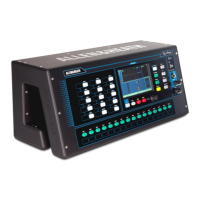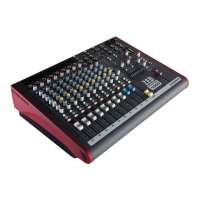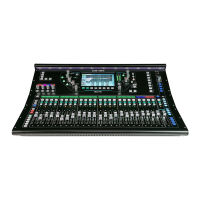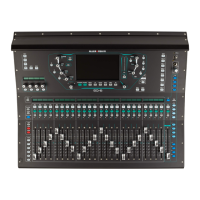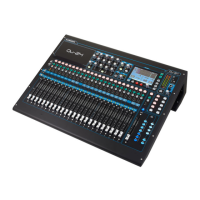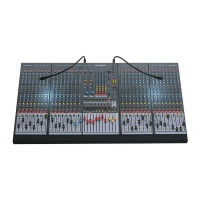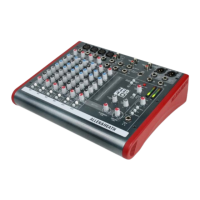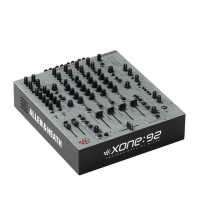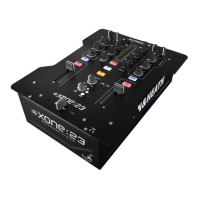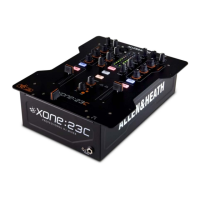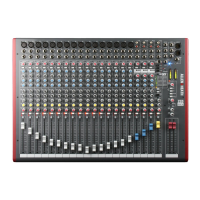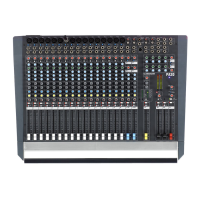
Do you have a question about the ALLEN & HEATH PA Series and is the answer not in the manual?
| Type | Analog Mixer |
|---|---|
| Microphone Preamps | Yes |
| Phantom Power | Yes |
| Power Supply | Internal |
| EQ Bands per Channel | 3 |
| Subgroups | 4 |
| Dimensions (W x D x H) | Varies by model |
| Weight | Varies by model |
Details the requirements and conditions for claiming warranty service on the product.
Guidance on correctly wiring the mains plug for safe operation and to prevent electrical hazards.
Highlights the main functionalities and capabilities of the PA Series consoles.
Details optional accessories like rack ears, software, and lamps for the consoles.
Explains the differences and advantages of balanced and unbalanced audio connections.
Guidance on selecting and connecting various audio sources to the mono channel inputs.
Tips for effectively adjusting EQ settings for optimal sound quality and feedback prevention.
Steps for creating effective foldback monitor mixes for performers on stage.
Instructions on how to use channel faders for adjusting signal levels and mixing.
Explanation of the decibel (dB) scale and its meaning in audio gain measurement.
Describes the two independent stereo inputs, ST1(3) and ST2(4), for the channel.
Guidance on connecting and using stereo sources with the console's stereo channels.
Explains how stereo channel aux sends function for foldback and effects mixes.
Adjusts the balance between the left and right stereo signals for the channel.
Diagrams illustrating signal flow for internal, external, and combined effects processing.
Defines 'wet' (effect) and 'dry' (original) signals and how they are combined in the mix.
How to use PFL to check sound quality and gain for the FX channel.
Adjusts the overall level of the effects in the LR mix and foldback sends.
How to disable the internal effects processor to use external units instead.
Information on using a footswitch for FX channel mute and bypass functions.
Details the software for editing internal effects parameters and customizing presets on a PC.
Describes the main faders for controlling house and foldback mix levels.
Explains how to achieve optimal signal levels between stages for best audio performance.
How to play an independent music source through the house speakers during breaks.
Controls the volume for monitoring selected signal sources via headphones.
Explanation of the unique constant power system for consistent output into 4 or 8 ohm speakers.
Description of the LED indicators for signal presence, limiting, and speaker status on the amplifiers.
How to select input sources for the built-in amplifiers for different system setups.
Guidance on using parametric EQ to shape the amplifier's output for room and speaker response.
Details the 1/4" jack line level outputs, their impedance, and level characteristics.
How to use line level outputs to connect to amplifiers, processors, and recorders.
Instructions for connecting powered speakers to the console outputs for use.
Recommendations for selecting appropriate headphones for optimal monitoring clarity and performance.
Explanation of the SPDIF digital audio interface standard and its connection requirements.
How to integrate external speaker processors into the signal path for speaker equalization.
Procedure for checking speaker wiring polarity to avoid phase cancellation issues.
Information on speaker impedance and safe connection to the amplifiers to prevent damage.
